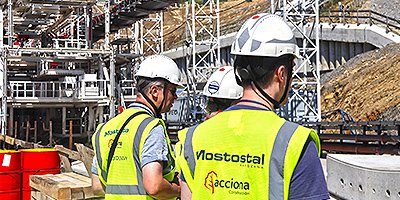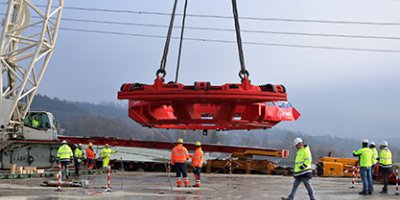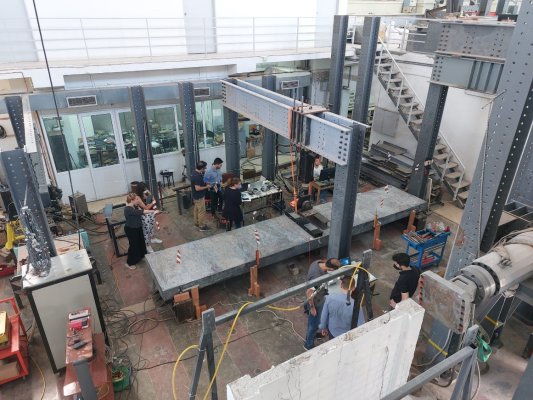"Can a bridge span be a sensor?"
Prefabricated concrete reinforced concrete FRP walkways offer longevity due to the use of corrosion-resistant materials. Thanks to the delivery of ready-to-install spans to the construction site, the execution time is shortened by up to two months. The main limitation of this solution is the weight of the elements, which complicates logistics and transport. In order to expand the possibilities of building footbridges, the Research and Development Department, together with the Athens University of Technology, conducted research aimed at the use of lightweight concrete.
The Athens University of Technology undertook the task of developing a new concrete recipe. The requirements, formulated by the employees of Mostostal Warszawa, were the compressive strength of concrete> 35 Mpa, modulus of elasticity> 32 GPa and weight <2000 kg / m3 - they will ensure load-bearing capacity at a reduced weight. In addition, the aim of the scientists was to give the traditional material, concrete, an unprecedented function of a sensor measuring the effort of an element. The latter assumption is realized by leading to the mixture of carbon nanotubes. They cause a significant increase in the electrical conductivity of concrete. A low-voltage alternating current can flow through a span element made of such concrete. When the span is loaded, microcracks appear (cracks open), which causes a temporary increase in electrical resistance. Measurement of changes in resistance allows the effort of a structural element to be calculated.
After a series of laboratory tests, Mostostal Warszawa made a test piece of new lightweight concrete, 6 x 1.2 x 0.2 m in size. It was then tested in the strength laboratory of the Athens University of Technology. In this way, the designed mechanical properties of the concrete itself and the span element were checked.
The technology of using the electrical resistance of concrete and thus making the elements made of it become a measuring sensor is still in the initial stage of development. However, the results obtained are positive and bring us closer to developing a solution that can be offered to clients.
The research carried out at the Athens University of Technology is an extension of the research and development work carried out earlier by the Research and Development Department, which we completed by introducing a product in the form of a corrosion-resistant prefabricated span.
The research was carried out as part of the LightCoce project under the grant agreement No. 814632.
In the photo: examination of the span element in the strength laboratory of the Athens University of Technology. Photography by J. Żach.



